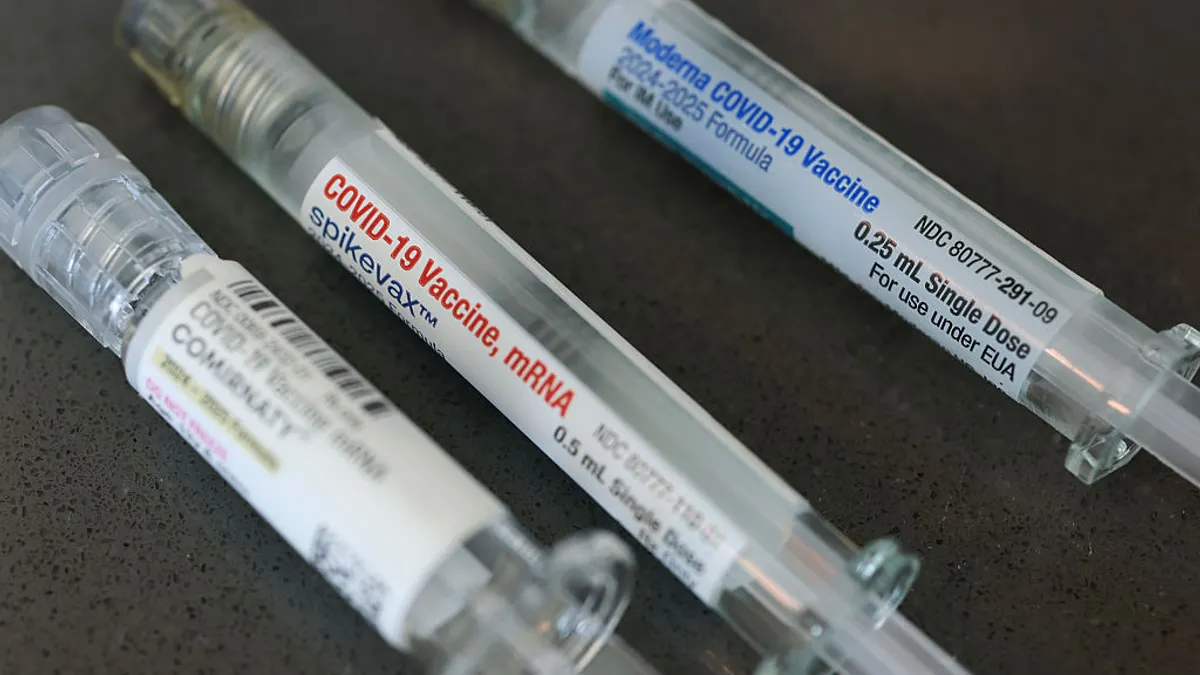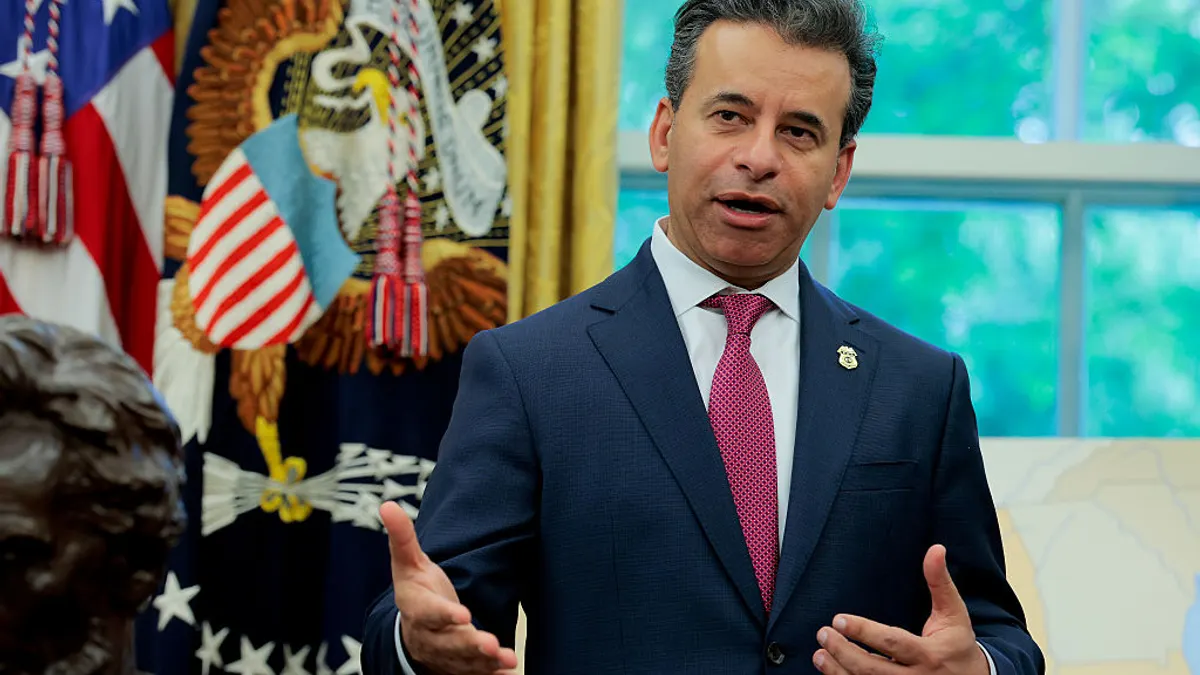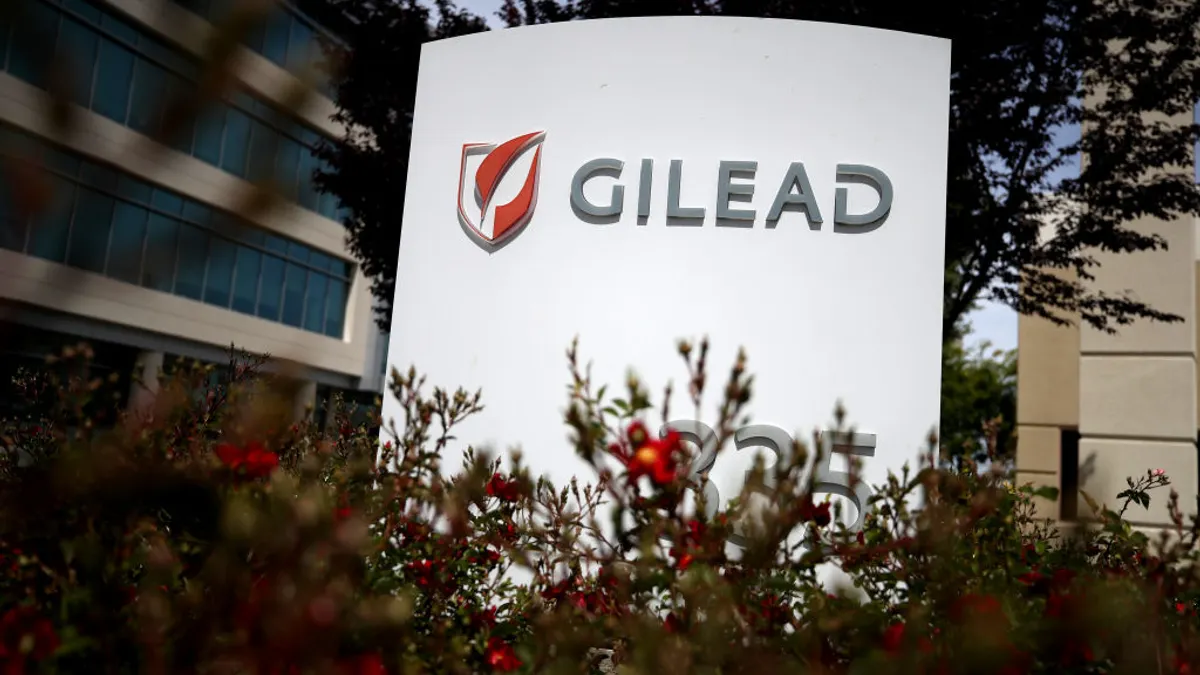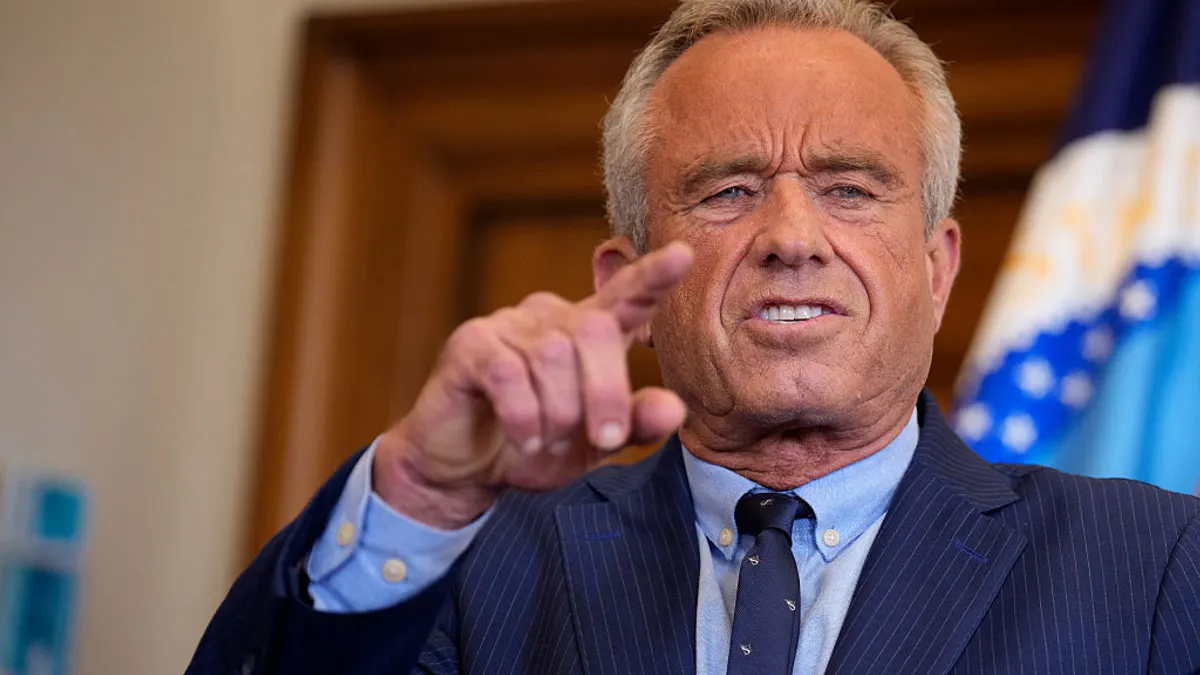Just as the ball got rolling on Medicare’s new negotiation powers, the U.S. underwent a radical change in leadership, leaving the drug pricing fight ostensibly in the Trump administration’s hands. Now the question is: Where does it go from here?
From the first 10 drugs already negotiated under the Inflation Reduction Act’s drug pricing provisions, which are slated to go into effect next year, to the release of 15 more drugs last month that will be negotiated for the 2027 plan year, the law has already become “status quo,” said Phil Sclafani, a principal at PwC U.S.
“Very far from the last Trump administration, which looked to repeal the [Affordable Care Act], we’ve seen an attitude of, ‘OK, the IRA is here — we’re going to keep the drugs that were selected, and we’re going to negotiate in good faith and go forward,’” Sclafani said.
And although special interests like the pharma lobby have been fighting against the negotiation program — calling it a form of “price setting” — the operational focus has shifted to work within the law and shape it incrementally moving forward, Sclafani said.
“From what I’ve heard, the work going on behind the scenes is to figure out how much flexibility there is in the drugs that can be selected and the process of that,” Sclafani said. “From what I’ve seen so far, legislative and judicial interpretations are that the law is pretty tight.”
While the Trump administration is intent on reversing many of Biden’s efforts, drug pricing could be where it’s less a matter of direction and more a matter of degree. President Trump will still seek a win over the previous administration’s efforts to lower drug prices, Kelly Griffin, director of the health policy and intelligence institute at PwC U.S., said on a podcast prior to Trump’s inauguration.
“There’s a strong interest in outdoing Biden in bringing down drug prices as part of the campaign to ‘tackle’ Big Pharma,” Griffin said.
The truth is, both major U.S. political parties have platforms that encourage lowering drug prices, and Trump is likely not looking to completely repeal the IRA as a potential solution, but tailor it to the administration’s priorities, Sclafani said.
“We’ve seen an attitude of, ‘OK, the IRA is here — we’re going to keep the drugs that were selected, and we’re going to negotiate in good faith and go forward.’”

Phil Sclafani
Principal, PwC U.S.
“There’s been a lot of advanced thinking about what pharmas can do in the year before the [negotiated prices] comes into effect in Medicare,” Sclafani said. “If you have products that may be selected, or your competitors may be selected, that is what it is — but what you can do in the near term is look for ways to make yourself as efficient and ready for it as possible.”
Shifting sands
The first 10 drugs selected for the program were mostly predictable and routine, targeting treatments that represented the biggest Medicare spend rather than other factors like cost per patient or potential savings opportunities, Sclafani said.
Based on that round, the overall impact for the industry was likely muted by a focus on older treatments approaching patent cliffs or drugs that were already offered with sizable rebates, he said. Some pharma leaders also confirmed this by minimizing the financial impact in earnings calls last year.
“It was the list they had to choose, being the 10 biggest, but also a really hard list to show true savings,” Sclafani said. Medicare scored some big drops in the negotiated list prices for next year, such as a 79% reduction for Merck & Co.’s diabetes med Januvia, which is in the process of losing exclusivity, or 67% price drop for Amgen’s arthritis drug Enbrel, which is set for its own patent cliff this decade.
The second list released in January, however, which includes Novo Nordisk’s blockbuster diabetes and weight loss drugs, could point to more impactful negotiations and a higher public and political profile for the law.
“Just looking at the press putting GLP-1s in the headline, it’s definitely something the public can connect with,” Sclafani said, noting that the drugs are not yet covered under Medicare for weight loss but are covered for diabetes.
These first two waves of the program can be viewed more as trial runs, while the future of the negotiation process could have a bigger impact depending on potential changes made by the Trump administration. From rumors of a complete IRA repeal to less expansive reform — plus the president’s proclivity to act quickly and forcefully — leave plenty of options on the table.
If the IRA is staying, there could be changes to how it’s structured, like adjusting how orphan drugs are exempted or addressing concerns about the difference in exemption between small and large molecule drugs. But the most realistic path is that of incremental change rather than an overhaul or repeal, Sclafani said.
“We’ve seen an evolution from the election to today, and I think we’ve landed back at a more incremental, rational point,” Sclafani said. “None of the extreme things have happened, and maybe that’s a reflection of a lot of other things to figure out, but now it seems to me that they’ve said, ‘good enough for now.’”
Managing impact
While the pharma industry has fought the IRA in the courts and in public statements, there is also the potential for the law to be beneficial to some companies, Sclafani said. While some drugmakers have estimated a negative impact on earnings, others could see a bump.
“If more patients can stay on their drugs and take them longer, you could get more sales from that,” Sclafani said. “Or if your drug is not going to be picked, but your competitor or another drug in the class will be picked, that can have an impact — bouncing that up against the life cycle of a drug has been a big consideration.”
Either way, pharma leaders need to play the long game as the IRA becomes cemented in the market infrastructure, looking out 10 years or more to potential impacts and even going as far as tailoring their R&D pipelines to minimize headwinds, Sclafani said.
“Companies are pouring significant effort into forecasting the impact, war gaming and scenario planning for different outcomes,” he said.
In some cases, that preparation has led to unintended consequences of preparatory thinking, with companies starting to work with Part D plans to reduce prices in advance of the new prices taking effect, Sclafani said.
As for pharma’s persistent argument that price negotiation will harm innovation, Sclafani said there is truth to that. Although the first drug lists have had a relatively mild impact, companies have shelved some riskier R&D programs to align with the program’s future. But in the long run, innovation is still the industry’s bread and butter, Sclafani said.
“The reality is, pharma still needs to discover and develop and bring to market great products to have products to sell,” he said.
The IRA’s ultimate impact will be decided by the drugs on the list, and the upcoming selections could get “very interesting,” Sclafani said.
“The first two rounds were the lists they had to choose, and didn’t have a lot of wiggle room in pricing,” he said. “The next list gets more nuanced to drive real savings with some of the higher costs-per-patient type of drugs, and that’s a different negotiation.”





















